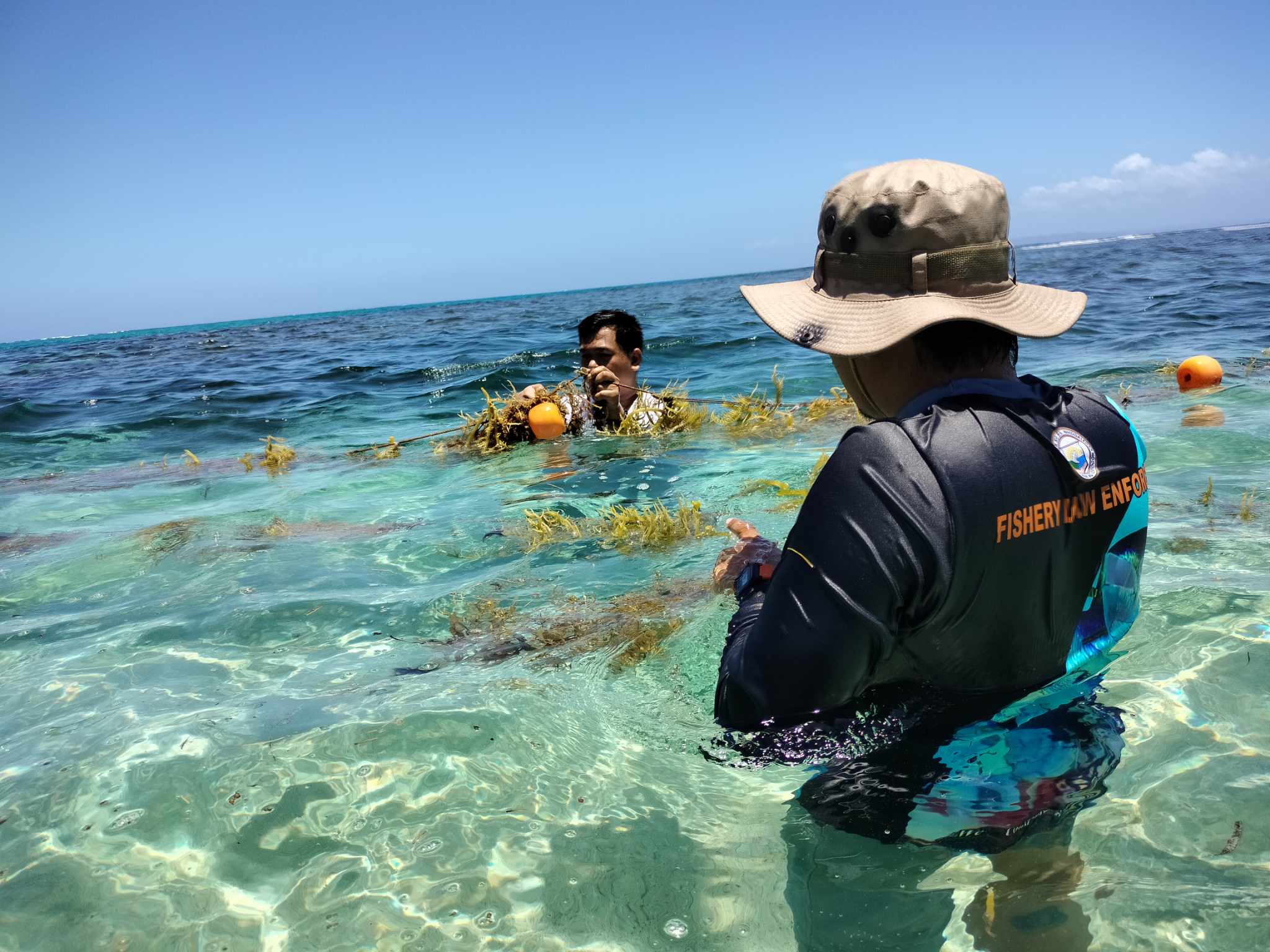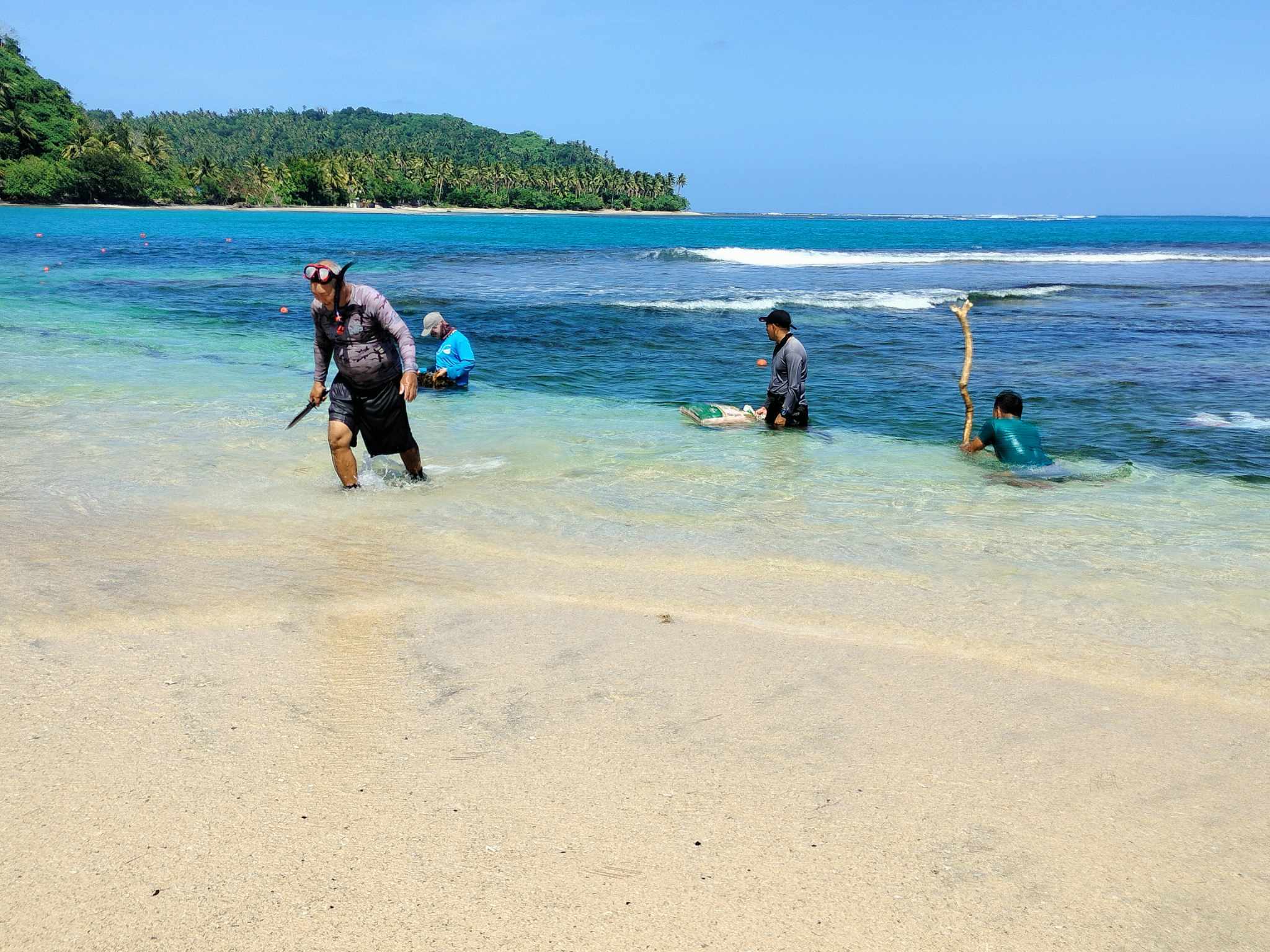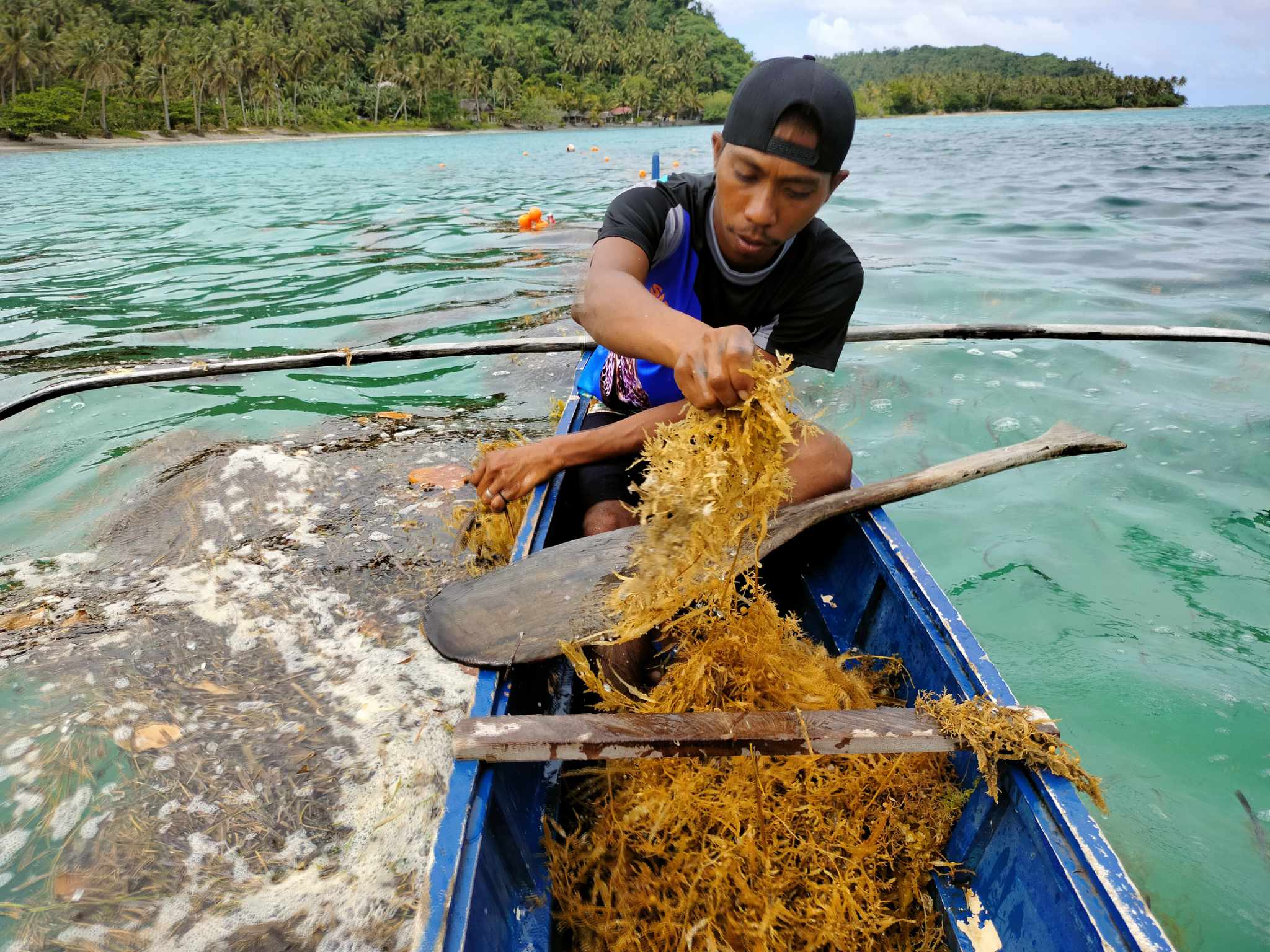LEGAZPI CITY (PIA) -- The trial planting of seaweed in the municipality of Sta. Magdalena in Sorsogon has been successful, sparking a surge of interest in farming this versatile marine plant.
The Bureau of Fisheries and Aquatic Resources-funded cultivation of edible seaweed (Kappaphycus) has inspired Sorsogon's fisherfolk to venture into the business, said Rowena Briones, head of BFAR information unit for the Bicol region.
The BFAR reported that they planted around 100 kilograms of propagules in the shallow coastal waters of Barangay San Rafael, Sta. Magdalena on March 12, 2024.
After 20 days of using the floating longline method for cultivating, the volume of the propagated plants doubled.
Amy Frilles, a determined farmer leader in Sta. Magdalena is planning to locate fisherfolk in the area who plan to embark on seaweed ranching. She said that this will help them access the propagules and technology provided by BFAR. Frilles proposed the San Rafael trial after a similar research in Barangay Peñafrancia failed.
“The encouraging results of the trial in San Rafael have sparked interest,” Frilles said.

Fisherfolks and personnel of the Bureau of Fisheries and Aquatic Resources plant propagules in the shallow coastal waters of Barangay San Rafael in Sta. Magdalena, Sorsogon. (Contributed photo/ Bureau of Fisheries and Aquatic Resources-Bicol)
She said the trial planting revealed that the timing of seaweed propagation is crucial.
"We chose to plant when the sea was calm, specifically in March. Since we're in the Pacific Ocean, the water is rough for half of the year, from November to October," Frilles said.
Frilles said she aims for three harvests in the current year.
The BFAR regional office said it will replicate the successful seaweed propagation in other municipalities in Sorsogon.
The aim is to encourage the cultivation of seaweed in all potential areas of the province.
This initiative is in response to the directive of Agriculture Secretary Francisco Tiu Laurel Jr. to increase seaweed production in the Bicol region.

Fisherfolks and personnel of the Bureau of Fisheries and Aquatic Resources plant propagules in the shallow coastal waters of Barangay San Rafael in Sta. Magdalena, Sorsogon. (Contributed photo/ Bureau of Fisheries and Aquatic Resources-Bicol)
According to the National Seaweed Industry Roadmap for 2022-2026, seaweed is the most important aqua-culture commodity and contributes 60 percent to 70 percent of the country's total aquaculture production.
The country has over 60,000 hectares of shallow coastal waters that are used for seaweed farming with the Bangsamoro Autonomous Region in Muslim Mindanao, Mimaropa (Mindoro, Marinduque, Romblon, Palawan), and the Zamboanga Peninsula being among the major seaweed-producing regions.
Most Filipinos relying on seaweed farming for their livelihood are farmers, and their number is over one million.
The seaweed’s versatility in food, animal feed, fertilizer, cosmetics, and various industrial applications has been the main driving force behind this interest.

A seaweed rancher harvests edible seaweed (Kappaphycus) from the shallow coastal waters of Barangay San Rafael in Sta. Magdalena, Sorsogon. (Contributed photo/ Bureau of Fisheries and Aquatic Resources-Bicol)
Sta. Magdalena Mayor Mark Jewery Lozano and Provincial Board Member Benito Doma support the aquaculture industry, according to Frilles.
The municipal government has limited each family to one sea ranch to allow more families to join the industry, she said.
Frilles said that following the successful trial in San Rafael, she was already looking ahead to production.
“As the seaweeds grow, I am considering options beyond drying and selling, such as processing,” she said. (PIA5)
